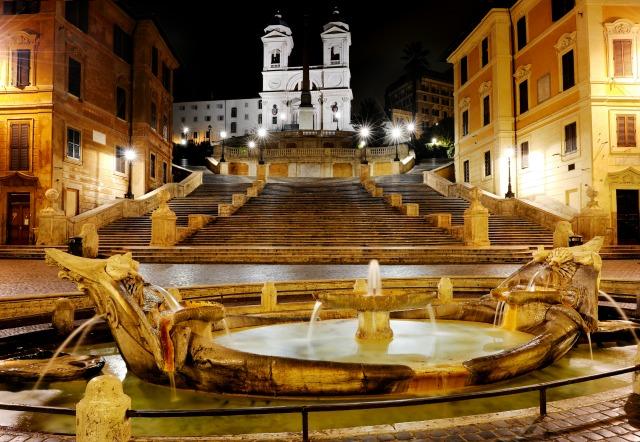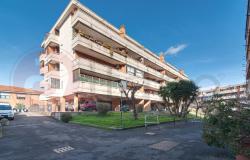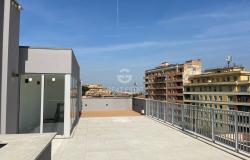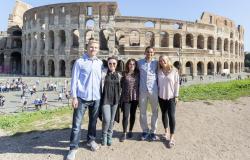Baroque marvels await you at every turn of the mind blowing maze that Rome is. But, where to begin? If you want the fast track to the 'Meraviglie Barocche' and make the most of Rome's beauty in a day below are some tips on the best monuments and masterpieces by Bernini, Borromini and Caravaggio.
Baroque is a period of artistic style that began around 1600 in Rome, Italy, and spread to most of Europe. It used exaggerated motion, drama, tension and grandeur in both sculpture, painting and architecture which drew on the senses in an excessive way. Because people were turning their back on the church, art was a powerful tool to encourage them to re-ignite their faith, at the time of the Counter Reformation, a reform movement within the Catholic church which developped in response to the Protestant reformation.
This period of revival within Catholicism, began with the Council of Trent (1545-1563), a commission of Cardinals tasked with the reform, ending at the close of the Thirty Years War (1648). Partly political council, involved the reviewing of religious orders and spiritual movements in an effort to properly retrain priests in spiritual and theological traditions. It included an outreach to rural churches where e.g. few priests spoke Latin, and attempted to improve the administration and discipline of the church, while educating the faithful about the liturgy, the value of art, and its meaning.
In this spirit, the Council of Trent proclaimed that architecture, painting and sculpture had a role as medium for communication, aimed towards influencing attitudes. Any work that aroused carnal desire was unacceptable in churches, but any depiction of Christ's suffering and agony was desirable and seen to be proper. In an era when Protestants destroyed images of saints, the Catholics emphasized their importance, especially, giving particular importance to the Virgin Mary. This 'melodrama' of exaggerated artworks reaffirmed the emotional depths of the Catholic faith and glorified both church and monarchy, transforming it architecturally by using a wealth of talented, skilled artists.
Baroque Heritage in Rome
Rome is Baroque on steroids, if a modern day comparison can be used in a pumped up way. When artists of that time decided to do things big, they created miracles out of marble and stone, drawing emotion from the viewers which was exactly the goal of the period, with stone carved angels as witnesses. It was a movement of drama and emotion where 'More is more' went the motto and featured exaggerated lighting, intense emotions, a release from restraint and, in a way, a kind of artistic sensationalism.
Baroque begins with a B, and two artists appeared on the scene at the time with a particular genius uniquely fitting to the movement. Gian Lorenzo Bernini (1598–1680) and Francesco Borromini (1599–1667). But B is not only for Baroque, its also for Borgia, Borghese and Barberini, who were some of Rome's wealthiest families who commissioned art. Along with Michelangelo Caravaggio, Rome's answer to Rembrandt, Bernini and Borromini were the designers who put this period of art on the map.
BAROQUE IN A DAY
Morning: Breakfast and Borghese browsing
Borghese Gallery
The Borghese Gallery is a museum draped in drama and beauty, situated at the top of what is today the Via Veneto, it was originally a weekend retreat for Cardinal Scipione Borghese. It holds a major art collection due to Borghese's wealth and good taste, and having Bernini on speed dial meant that he was the bees knees of his day when it came to commissioning and collecting art. With Bernini, Raphael, Titian and Caravaggio under one roof and not a bare mantelpiece in sight, this museum takes you back in time to experience an abundance of opulence.

Bernini's 'Apollo and Daphne'
Bernini could make marble do things never done before. He said that "those who never dare to break the rules never surpass them". Because of Daphne's beauty, Bernini went with the theme of the pursuit of the mythological nymph by the God Apollo, as inspired by Metamorphoses by Roman poet Ovid, in Apollo and Daphne (1662-1625). Daphne pleaded with her father Peneus,'Destroy the beauty that has injured me, or change the body that destroys my life'. Daphne's transformation from woman to tree is somehow captured mid moment and spectators are momentarily mesmerized by this statue in the round. When it comes to both art and emotion, Italians do nothing by half measures, and these creations are living, breathing examples of that. Other incredible highlights to see in this museum are Bernini's other statues 'The Rape of Persephone' and his 'David'.

Bernini's 'Santa Teresa in Ecstasy' statue
Visit Bernini's 'The Ecstasy of Saint Teresa', in the church of Santa Maria della Vittoria, a Baroque church dedicated to the Blessed Virgin. Located at Via XX Settembre 17, a mere block or two away from the Repubblica metro station, this work is widely considered a masterpiece of the movement. The mix of religious and erotic imagery is truthful to St Teresa's written account, and raised many eyebrows. Teresa describes an angel carrying a fire-tipped spear with which he pierces her heart repeatedly, an act that sends her into a state of spiritual ecstasy. "The pain" she writes " was so severe that it made me utter several moans. The sweetness caused by this intense pain is so extreme that one cannot possibly wish it to cease, nor is one’s soul then content with anything but God." (The Life of Saint Teresa of Ávila by herself, Chapter 29).
Saint Teresa's love of God is like a desire, embodying emotion and eroticism. A definite 'must', on the Baroque list.

Mid- afternoon, beat the morning crowds and go to: Bernini's Baldacchino at St Peter's Basilica.
No Baroque hit list would be complete without a trip to see the largest church in the world, St Peters Basilica. Before you enter this beautiful basilica, enjoy Saint Peter's Square in front of it, which is designed by the same man, Bernini. The optical illusion whereby the 4 deep colonnades appear to be one column deep, is experienced from a spot marked on the ground, to the right side of the square. The enormity of the building is astonishing and before you go into the church, take a look at the shape of the piazza, it is round. Yes, circular, symbolically representing the arms of the church welcoming you back into Christianity, with the Counter Reformation.
The interior is jaw dropping, and rising above the altar of Saint Peter's Basilica, is Bernini's masterpiece, the Baldacchino, a majestic bronze gazebo. This was the first time the artist combined sculpture and architecture, an important development in Baroque church interior design and furnishing, taking nine years to make from 1624 to 1633. Decorated with the bees of the Barberini' coat of arms to whose family Pope Urban VIII belonged. The bronze for this 95 feet canopy amounted to 6.000 tonnes. A division of which was taken from the roof of the Pantheon at the order of the Barberini family. There is a famous expression in Rome, that what the barbarians did not do, the Barberini did. The monument has a base made of marble, between which four gigantic twisted columns, 20 m. high, are adorned with sprigs of olive and bay. Cherubs then perch above bronze tassels, which dangle from the top, and 'wow' would be an understatement!

Saint Matthew, Church of Saint Louis in France, Caravaggio
A cobbled stones throw behind Piazza Navona is the church of Saint Louis in France, home to three Caravaggio paintings depicting scenes from the life of Saint Matthew.
Michelangelo Merisi Caravaggio was an artist active in Rome, Naples and Malta between 1592 and 1610, famed for his inner turmoil and torment. He murdered a man during a drunken bar room brawl, before being exiled from Rome. Emotional energy made its way from his brush to the canvas, deploying the dramatic lighting that was revolutionary of the time. Dramatizing realism, the mirror mattered as much to his work as the brush, as looking at real life was as important as the tool itself. He made his subjects come to life, by omitting halos, or rather making them minimal, thus bearing more of a likeness to the viewer than the Renaissance artists did before him.
His work were more believable, with drama, light and expression making the paintings appear almost three dimensional. 'The Calling of Saint Matthew', 'The Martyrdom of Saint Matthew', and 'Saint Matthew with an angel', were masterfully created between 1599-1600.

Beautiful by day sipping a cappuccino, or beautiful by night with a cocktail kept company by twilight, are:
Bernini's Fountain of the Four Rivers in Piazza Navona
Rome's largest square boasts both Borromini and Bernini, and is home to the Fountain of the Four Rivers, which is a perfect place to watch the world go by. With a 3,500 year old obelisk on top of this fountain, four rivers: the Nile, Ganges, Danube, and Rio di Plata, this fountain embodies what a melting pot Rome is. Bernini's giant men, each representing a river, boast Travertine stone muscles that dominate the piazza. Power, wealth and papal strength is the name of the game. The men each hold symbols relevant to their rivers, and one holds up the papal crest. The Roman fountains have the added impressive thumbs up because they are fed by the aqueducts, providing water to the city dwellers.
Public fountains in Rome served multi purposes, they were highly needed as sources of water in the centuries prior to home plumbing and they were monuments to the papal patrons. The fountain has a huge lion and horse wading through its water, 'pure drama', while the mane of the horse becomes merged with its foliage, as Bernini boasts that mixing texture and Travertine is all in a day's work for him. The lights on this fountain are on for 24 hours, so the later the better for a postcard perfect moment.

Borromini's church of Saint Agnes
Is it a palace, is it a church? The impact of this building makes one wonder, for a minute, if it's a church at all, as it dances over piazza Navona, alongside the Pamphili Palace. It's facade is concaved and convexed, in movement, typically Baroque style. It is almost musical in its design, playing a beautiful tune to entertain the viewers. It stands in Piazza Navona, bang opposite Bernini's fountain.
It is often said that Bernini sculpted the figure of the Nile covering his eyes and Rio de la Plata extending his hand towards the church as if they thought the façade designed by his rival Borromini was about to fall down. This story, like many urban legends, persists because it has a ring of authenticity, despite the fact that Bernini's fountain pre-dates the façade by some years. Borromini and Bernini became rivals, and more, competing for architectural commissions.

La Barcaccia
Fontana della Barcaccia (Fountain of the Old Boat) is a Baroque fresh-water fountain in the Piazza di Spagna just below the Spanish Steps.
Bernini worked on this fountain commissioned by Pope Urban VIII with his father Pietro. It was completed in 1627 and it has the shape of a half-sunken ship with water overflowing its bows because, prior to the river walls being built, the Tiber often flooded. According to a legend, Pope Urban VIII had the fountain installed after he had been impressed by a boat brought till Piazza di Spagna by a flood in 1598.

Piazza Barberini
Things to see in this Piazza are the Barberini Palace and the two Bernini fountains, his Triton fountain and the Fountain of the Bees.
The palace is home to a grand Bernini staircase leading to the National Gallery of Ancient Art, and a fabulous bookshop, with leather bookmarks and a bunch of coffee table items dear Santa must eventually buy!
The Piazza Barberini's monumental Triton Fountain, was too important to be belittled by animals drinking from it, so Bernini multi tasked by building a mini fountain, called the 'drinking fountain', also known as the Fountain of the Bees, on the corner of the same square. The designs of the two fountains complement brilliantly. The Triton Fountain is echoed with the use of shells to form the inscription plaque and basin, that match those in the larger fountain, as well as the trademark de rigueur Barberini bumble bees, serving as spouts. Bernini was favored by the Barberini, whose palatial residences dominated the square named after said clan. The difference between the early Baroque of the Borghese and the high Baroque instigated by the Barberini Pope Urban VIII, are witnessed here.

Rome wasn't built in a day, and is a multifaceted design palette. But its decadence and glory are the icing on the cake, or the chocolate dusting on the cappuccino, if you will. Without a doubt, the beauty of the Baroque monuments contribute to the energy and drama of this unique Eternal City.









